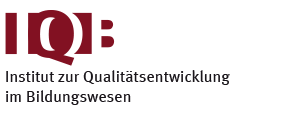Bildungsstandards
Im Oktober 1997 hat die Kultusministerkonferenz (KMK) beschlossen, die Erträge des deutschen Schulsystems im Rahmen wissenschaftlicher Untersuchungen international vergleichen zu lassen (Konstanzer Beschluss). Ziel der Vergleiche ist es, gesicherte Befunde über Stärken und Schwächen von Schülerinnen und Schülern in zentralen Kompetenzbereichen zu erhalten. Seit Mitte der 1990er Jahre nimmt Deutschland regelmäßig an den internationalen Schulleistungsstudien PISA, TIMSS und PIRLS/IGLU teil.
Die um die Jahrtausendwende in internationalen Schulleistungsstudien erzielten Resultate deuteten darauf hin, dass die im deutschen Bildungssystem zu dieser Zeit vorherrschende Steuerung schulischer Leistungen über Lehrpläne allein (Inputsteuerung) nicht zu den erwünschten Ergebnissen führt. Daher wurde ein Reformprozess eingeleitet, der das Augenmerk auf die Wirkungen und Ergebnisse von Bildungsprozessen verstärken soll (Outputsteuerung). Dieser beinhaltet die verbindliche Festlegung von Kompetenzzielen für Schülerinnen und Schüler sowie deren regelmäßige Überprüfung in empirischen Untersuchungen. Entsprechend hat die KMK zu Beginn des neuen Jahrtausends einen besonderen Schwerpunkt ihrer Arbeit auf die Entwicklung und Implementation von länderübergreifenden Bildungsstandards gelegt. Diese sollen zur Qualitätsentwicklung und Qualitätssicherung des deutschen Bildungssystems beitragen.
Bildungsstandards geben Ziele der pädagogischen Arbeit in Form von anzustrebenden Lernergebnissen vor. Sie legen fächerspezifisch fest, welche Kompetenzen Kinder und Jugendliche bis zu einem bestimmten Abschnitt in ihrer Schullaufbahn entwickelt haben sollen. Unter einer Kompetenz wird dabei die Fähigkeit verstanden, Wissen und Können in den jeweiligen Fächern zur Lösung von Problemen anzuwenden.
Die Bildungsstandards der KMK sollen schulische Lehr- und Lernprozesse auf eine kontinuierliche und vernetzte Entwicklung von Kernkompetenzen orientieren, die auch für zukünftige Bildungsprozesse bedeutsam sind. Sie sollen ferner dazu beitragen, die Durchlässigkeit von Bildungswegen und die Vergleichbarkeit von Abschlüssen sicherzustellen. Flankiert von geeigneten Maßnahmen der Unterstützung von Schulen bei ihrer Einführung und Umsetzung, bilden Bildungsstandards die Basis für eine systematische Weiterentwicklung des Bildungssystems.
Im Dezember 2003 verabschiedete die KMK zunächst die Bildungsstandards für die Fächer Deutsch und Mathematik sowie für die Erste Fremdsprache (Englisch und Französisch) für den Mittleren Schulabschluss. Im Oktober 2004 folgte die Verabschiedung der Bildungsstandards für den Hauptschulabschluss in den Fächern Deutsch, Mathematik und der Ersten Fremdsprache sowie im Primarbereich für die Fächer Deutsch und Mathematik. Die Bildungsstandards für den Mittleren Abschluss in den naturwissenschaftlichen Fächern (Biologie, Chemie und Physik) wurden im Dezember 2004 verabschiedet. Die verbindliche Einführung der Bildungsstandards erfolgte in allen Ländern in der Bundesrepublik Deutschland zum Schuljahresbeginn 2004/2005 bzw. 2005/2006. Die Bildungsstandards im Primarbereich und in der Sekundarstufe I werden derzeit weiterentwickelt.
Am 18.10.2012 wurden im Rahmen der 339. Sitzung der KMK die Bildungsstandards für die Allgemeine Hochschulreife für die Fächer Deutsch und Mathematik sowie für die fortgeführten Fremdsprachen (Englisch und Französisch) verabschiedet. Die Bildungsstandards für die Allgemeine Hochschulreife in den naturwissenschaftlichen Fächern Biologie, Chemie und Physik wurden am 18.06.2020 in der 370. Sitzung der KMK beschlossen.
Eine Hauptaufgabe des IQB besteht darin, auf der Grundlage der Bildungsstandards für den Primarbereich und die Sekundarstufe I Testaufgaben zu entwickeln und zu überprüfen, inwieweit die angestrebten Kompetenzziele erreicht werden.

